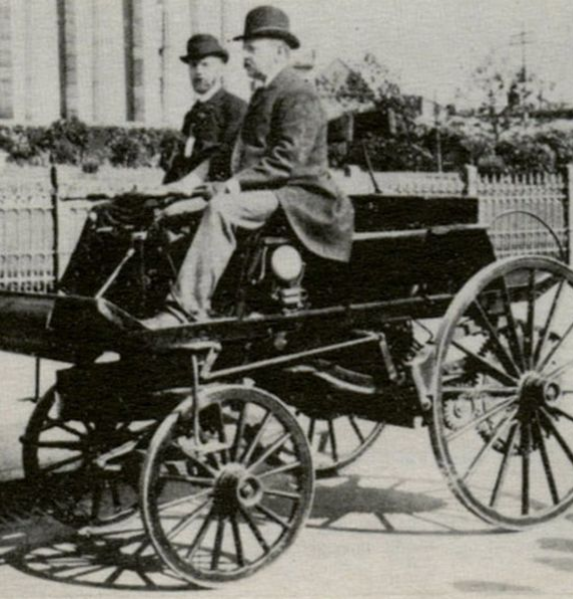Is New Transportation Important
Is a new type of transportation needed?

To the average global inhabitant, how important is it to implement a brand-new type of transportation? Is it an important or irrelevant personal issue? People in western society are adjusted to the accommodating car culture lifestyle. The majority of people in western society are satisfied with cars.
The year-to-year manufacture’s design improvements are an anticipated sales technique to display new conveniences to provide increased car sales. These small style changes allow a consumer mindset for no urgency to change from this mode of transportation. The automobile has remained society’s primary source of transportation for over 100 years.
Roads are consistently bad. Bad roads are beyond the scope of car manufactures. This provokes the automobile’s unsustainability onto government’s responsibility. In a large sense this is an unfair business practice. An automobile is not a public utility. In other words; phone companies are required to provide their own infrastructure to allow consumer usability. Energy companies have to provide massive amounts of infrastructure. Somehow (politics; wink, wink) the automobile industry is the only industry that is setup which places the burden of its use, as a liability, upon the consumer.
When the trains built western society, the infrastructure of train tracks were built by private industry. Each train line was built by a private company. Each of these companies had to carry the burden of building its infrastructure, paying for the vehicles, attracting business and carrying all the costs of fuel and all other liabilities.
The automobile industry pays nothing. There are no infrastructure costs, no fuel consumption costs, no related passenger costs and no liability costs related to product user infrastructure. The government decided to place the burden of all automobile infrastructure costs as a burden onto the citizenry. In the 1930s, this forced the private train and streetcar companies out of existence.
Rather than placing responsibility of road infrastructure onto vehicle manufactures who are completely reliant upon the road infrastructure, citizenry assumes land acquisition, road building and maintenance as government’s responsibility.
How prevalent is the assumption that a product manufacturer has no responsibility for its product use? And yet, the automobile centric land-use design mandates an automobile as a fundamental necessity for urban design’s transportation. The general public is unaware of traffic flow patterns, urban growth land-use design or the aspects of automobile centric land-use design. And still, the unsustainable impacts of automobiles continues.
There are benefits to the automobile, there are also some long-hidden detriments.
All urban growth is based upon its land-use design
Land-use design is dependent upon is primary source of transportation. There are currently six modes of transportation; a conveyance to transport people or goods. All forms of current transportation use one of these classifications as a conveyance of transport:
Walking
Animal
Boat
Train
Automobile
Airplane
Some older transit-oriented designed cities provide options for public transit, this is related to an area’s land-use design. Functional public transit systems necessitate appropriate land-use designs. Cities that still maintain their streetcar networks are able to remain strong commerce centers. These areas are able to provide public transportation that is more convenient than automobiles.
Cities that have removed their fixed rail transit systems, have abandoned its original vertical growth design. This produces land-use dysfunction. A mixture of a transit oriented and automobile centric land-use design produces disorder.
The general public is unaware of traffic flow patterns. Additionally, land-use design of urban growth is a mystery to the public. Another lost conversation is unsustainable impacts of automobiles. Nonetheless these are vital concerns that should be dealt with.
Land-use is essential in the question about a new type of transportation; is it important? What happens when the question is put into the hands of society? Society as a whole is fickle. Expecting an answer is moot.
A cultural conversation says: sustainable transportation is electric cars and sustainable urban growth is forcing everyone to live in tiny houses on wheels in micro village parking lots. This, however, is incorrect on both counts. Electric cars were among the first cars ever built making the electric car technology over 125 years old.
Other transportation advances
Adding to the mysterious transportation issues is yet another justifiable matter of invisible concern: space exploration.
Due to practical reach being untenable from the grasp of 8 billion people, society members maintain the opinion that space travel and visiting other planets is unimportant. Because interplanetary travel is not a current option for people, it doesn’t concern people.
In 2020 there were three successful entrepreneurs building private space flight entities. One of the three leads the trio with media time, the other two have become obscure in the background. NASA continues its sluggishly prodding along with its excessively bloated budget promoting equity in political correctness conflicts.
Globally, many countries are now involved in space travel. The interest in space flight is becoming very active:
France space program
Russian space information site
In light of the global rise in space travel, what are the typical thoughts and reactions for change to the status-quo of transportation? Generally speaking, the media portrays ‘the glass is empty’. This portrayal suggests that the rich should be punished for having money and welfare checks need to be higher. Nothing about transportation advances.
With a broken clock being able to show the correct time twice per day, a clock that functions properly always shows the correct time. A broken society is like a broken clock, bureaucracy is incapable to have a full glass. Roads are broken for a reason.
Sustainability requires things that work well. Common sense is a physics prerequisite for design. Energy efficiency for a transportation vehicle is essential. Current modes of transportation lack energy efficiency, therefore, building upon its failure in an attempt to reach sustainability is unobtainable. The discovery for a brand-new mode of transportation is the only plausible rationale for sustainable transportation.
The 200-year-old train technology was a great transportation solution for society in the 1800s. Automobiles replaced train technology 125 years ago. Cars are the center piece of western civilization is an outdated means; a failure to sustainability.
Those who follow the CATTCC blog will recognize CATTCC’s opinion that space travel has to change and become efficient. Space travel with chemical explosions is at best: impractical.
Answering the question as to whether a new mode of transportation is necessary; philosophically: yes.
After a yes answer, the next questions are how and when. This explains the CATTCC mission and its rational to study gravity as a source of motion for transportation.
Answers are found by asking questions. The question of gravity has been asked here before: is it a product of mass or is it a subatomic action? The theory CATTCC found provides direction for research in discovering how to use it for efficient space travel.
Gravity is how NASA’s Parker Sun Mission attained the fastest speed ever attained by mankind. This brings rise to another question. What are the speed capabilities when considering the possibility for gravity as the source of motion for space travel?



